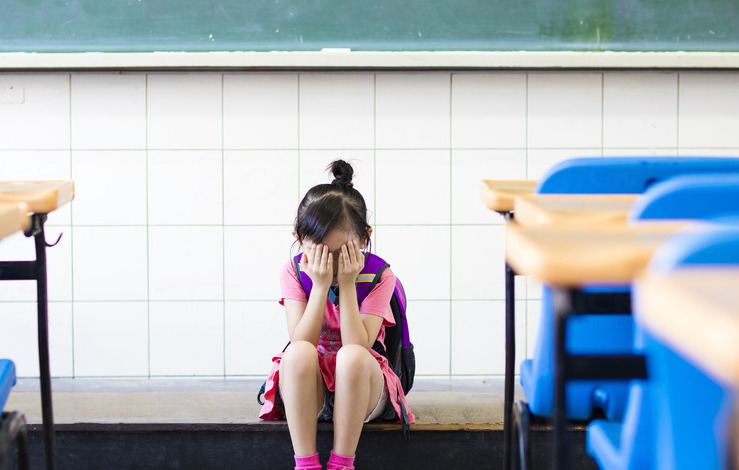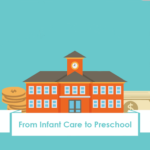
In a recent survey of students worldwide, Singapore has the third-highest rate of bullying globally. Education Minister Ong Ye Kung says that “bullying is wrong and cannot be tolerated anywhere, especially in schools”.
What Gives Rise to Bullying in Children?
The Children Society of Singapore defines bullying as “any action apparently intended to victimise and repeated at least twice every single month over a span of
one school year.” Bullying in children occurs for various reasons – jealousy, internal rage or replicating bullying behaviours seen in adults, or they themselves are victims of bullies. It can begin as young as primary school.
Bullying is a real threat to your child’s psychological and emotional wellbeing because it can exist in many forms and types. There is verbal bullying where the bully uses words to shame or hurt the victims (e.g. Including malicious teasing, insulting, ridiculing, name-calling, threats or intimidation).
It can be psychological and emotional abuse where the bully spreads rumours to damage someone’s reputation, manipulate friendships to blackmail the one being bullied or deliberately excluding someone from a conversation or activity.
Bullying in children can be physical where the victim suffers physical hurt (pushing, punching, or hitting) or having his/her belongings taken away or destroyed. It can also be the intrusion of cyberbullying, where embarrassing images or videos are posted on social media accounts or crude text messages or emails are sent.
Esther Ng, founder of Coalition Against Bullying for Children and Youth believes children’s unsupervised access to technology and websites is fuelling the trend of cyberbullying. “You can put a nanny programme in (a smartphone), but still you can’t stop someone from (being a cyberbully),” she adds.
Read also: Depression in Children: What It Is and How You Can Help
List of Warning Signs of Bullying
Dr Tan Hwee Sim, a specialist in psychiatry & consultant at Raffles Counselling Centre says that “the warning signs that a child is being bullied may be vague and may mimic other mental health issues.”
She advises parents to look out for these warning signs of bullying:
- Unexplainable injuries
- Regular loss or destroyed clothing, books, electronics, or jewellery
- Frequent headaches or stomach aches, feeling sick or faking illness
- Changes in eating habits such as skipping meals or binge eating
- Trouble sleeping or frequent nightmares
- Declining grades
- Reluctance to go to school
- Abrupt loss of friends
- Avoidance of social situations
- Feelings of helplessness or decreased self-esteem
- Distress after spending time online or on the phone without a reasonable explanation.
- Self-destructive behaviours such as running away from home, harming themselves, or talking about suicide
How To Help Your Child If He/She Is Bullied
If you suspect that your child is being bullied in school, here are some steps you can take to help him/her.
1. Listen with an open mind
The first thing any parent wants to do when they hear that his/her child is being bullied is to protect his/her child. However, Singapore Children’s Society (SCS) counsellor Maathavan K share that parents can show support in the form of listening with empathy and compassion instead.
Assistant professor of psychology at Yale-NUS College, Cheung Hoi Shan emphasises that parental warmth and a supportive environment in the home are critical ingredients for addressing bullying.
He adds that “parental warmth seems to be a protective factor. When parents maintain a strong affectional bond with their children, it promotes the development of empathy and greater emotion control in children, which are, in turn, linked to a lower likelihood of aggression. Moreover, parental warmth and support also serve to protect victims from the negative outcomes of being bullied.”
2. Create a list of responses
Teach your child to recognise bullying behaviours and how to respond without provoking the bully. Give your child verbal language to use such as simple and direct phrases like these: “Stop that right now. Leave me alone.” “Back off.” “Yeah, whatever.
3. Role-play “what if” scenarios
Rehearse the above phrases with your child by role-playing possible scenarios where your child may encounter bullying behaviour. Use stuffed toys to enact the scenes if your child is not comfortable. Teach or encourage your child to speak in a strong, firm voice as whining or crying will only encourage a bully.
4. Build your child’s confidence and resilience
Encourage hobbies, extracurricular activities, and social situations that bring out the best in your child. Affirm your child’s unique qualities by telling him/her what you love about him/her and reinforce positive behaviours that you’d like to see more.
5. Engage appropriate help for your child
Dr Wong Hwei Ming, a registered educational psychologist in Singapore and Research Scientist in the Office of Education Research, National Institute of Education (NIE) recommends that parents should first find out what happened from their child (by listening). Then discuss the best subsequent steps (with their child) to address the issue (with teachers or appropriate authorities) and prevent further incidents.
Read also: 15 Bizarre and Dangerous Online Challenges Your Child Might Be Tempted to Try
There you go, mums and dads. We hope this article shed some light on the warning signs of bullying and how you can help your child take action against bullying.























